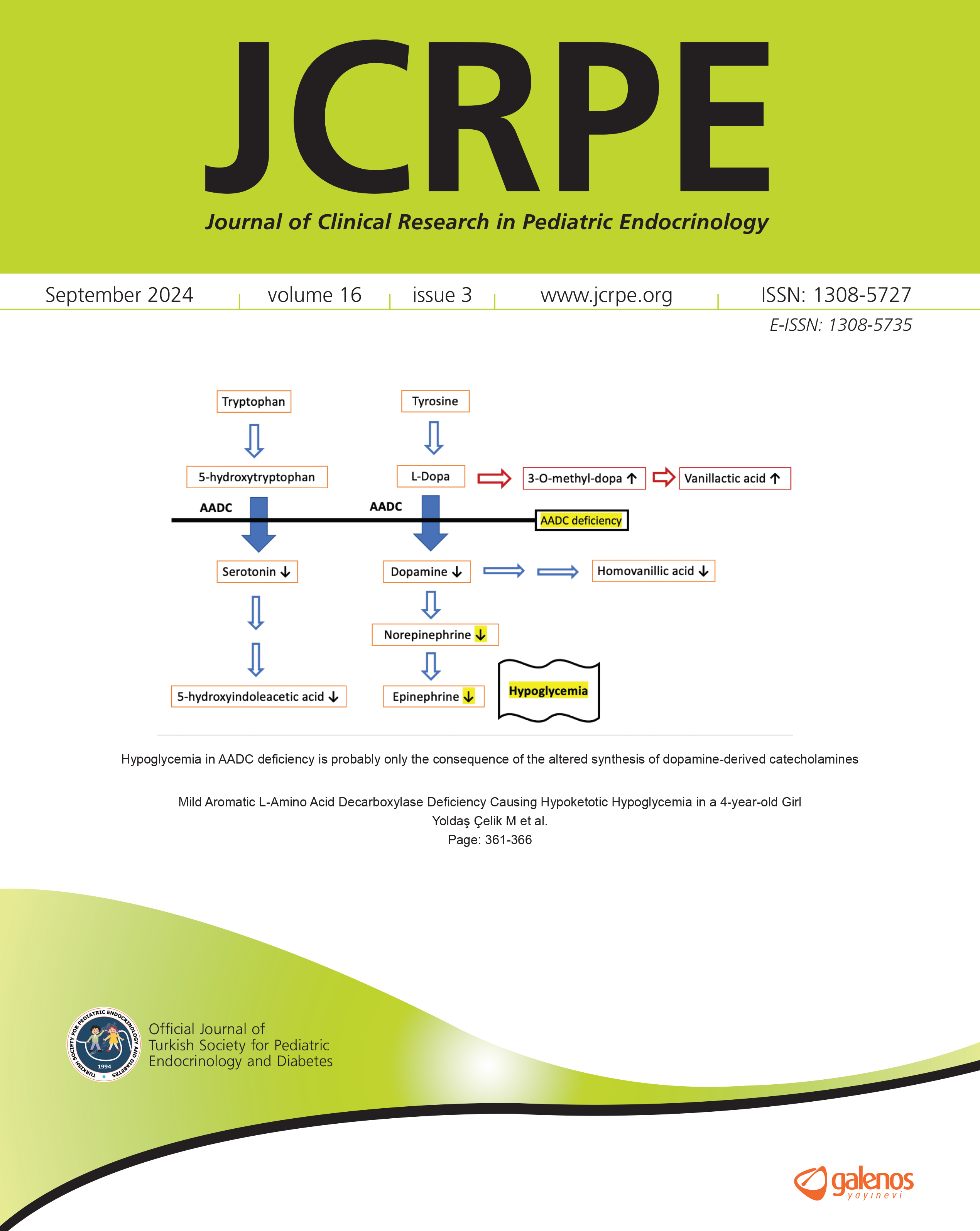Evaluation of Arrhythmia Risk in Children with Type 1 Diabetes Mellitus
Yasemin ÖZDEMİR ŞAHAN1, Gönül BÜYÜKYILMAZ2, Oğuzhan DOĞAN1, Mehmet BOYRAZ2, İbrahim İlker ÇETİN1, İbrahim ECE11Department of Pediatric Cardiology, Turkish Ministry of Health, Ankara City Hospital, Ankara, Turkiye2Department of Pediatric Endocrinology, Turkish Ministry of Health, Ankara City Hospital, Ankara, Turkiye
INTRODUCTION: Children with type 1 diabetes mellitus are susceptible to arrhythmias and sudden cardiac death. In this study, we aimed to explore the arrhythmia risk among children with type 1 diabetes mellitus by assessing electrocardiographic parameters.
METHODS: A total of 165 children diagnosed with type 1 diabetes mellitus, aged 10-18 years, and 154 healthy children matched for age and gender without any chronic diseases, were included in the study. The electrocardiographical ventricular depolarization-repolarization parameters of both groups and the correlation of these parameters with length of time since diagnosis of type 1 diabetes mellitus, metabolic control, and the presence of additional complications were evaluated.
RESULTS: The groups were similar in terms of age, gender, weight, height, and BMI (p>0.05). The median length of time since diagnosis of diabetes was 5 years. QT (maximum), QTc (minimum and maximum), QT and QTc dispersion, Tp-e (minimum and maximum), Tp-e dispersion, Tp-e/ QTc-max values were significantly higher in the diabetic group compared with controls although QTc intervals are within normal ranges. No statistically significant correlation was observed between electrocardiographic findings and length of time since diagnosis of type 1 diabetes mellitus, HbA1c levels, or complications.
DISCUSSION AND CONCLUSION: As children with type 1 diabetes mellitus are at high risk of impaired ventricular depolarization and repolarization, they should undergo cardiac assessment and regular electrocardiographic monitoring.
Manuscript Language: English



























